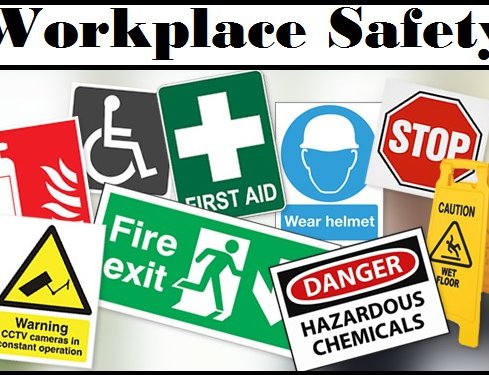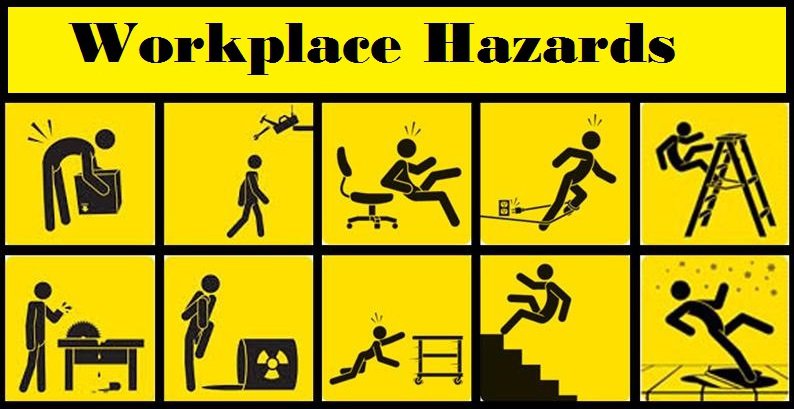
Fundamental Principles of Occupational Health and Safety, an International Labor Organization (ILO) publication in 2008, defines Occupational Health & Safety (OHS) as “the science of the anticipation, recognition, evaluation and control of hazards arising in or from the workplace that could impair the health and well-being of workers, taking into account the possible impact on the surrounding communities and the general environment”.
It clearly indicates that OHS is not only concerned about the wellbeing of employees within an organization but also about the community and environment in which it operates. There could be a number of hazards that workers might encounter in their workplace every day. Slips, trips & falls, manual handling, ergonomic, machine, electric, chemical, and fire related hazards are some of the most frequently encountered risks in a workplace.
There are various international management systems, standards and guidelines available to manage health and safety at workplace. ILO-OSH 2001, BS OHSAS 18001: 2007, ISO 45001:2018, ANSI Z10, and OSHA are the major international players in setting standards and providing benchmarks for sound implementation of OHS management system within an organization. Along the same line, the recent promulgation of the new Labor Act 2017 and the Labor Rules 2018 has been a milestone steps towards ensuring employees’ health and safety in Nepalese enterprises.
As per the Labor Law, organizations throughout the country are now required to develop OHS policy, assign various OHS responsibilities, form OHS committee, and appoint an OHS Focal Person to manage health and safety within their facilities. Reporting of accidents & illnesses, provision for workers’ insurance & compensation, securing employees’ stop-work authority & whistleblower rights, and random inspection conducted by the Labor Office are some of the notable mandatory rules to be followed by every enterprise doing business in Nepal.
Although above rules may sound a far cry from the current safety practices in most of the industries and factories throughout the country, few public and non-profit actors such as, GEFONT, ILO and ‘Occupational Safety & Health Project’ under the Department of Labor have been trying to instill such OHS culture within private sector industries for a long time.
A Business Case
Many studies around the world have clearly shown that workers’ health and safety related issues are closely correlated with productivity and quality of any company. Moving in this direction, managing Occupational Health & Safety (OHS) can significantly improve the working conditions within your facility. It also helps you make best possible use of your facilities, machines, equipment and employees by reducing loss, increasing productivity and improving quality of your products.
There is no doubt that the number one priority of any business is ‘to make money’ but ‘doing it safely’ makes your business sustainable as well. OHS management is a systematic approach to manage safety & wellbeing of employees as well as to enhance productivity & quality. Nevertheless, integrating OHS into day-to-day business practice and in decision making process is probably one of the biggest challenges faced by majority of Small and Medium Enterprises (SMEs) in Nepal today.
Companies worldwide continually strive for ‘lean’ production, ‘green’ supply chain management and ‘safety’ of their employees. When lean, green and safety are aligned, all parties benefit including the company, its customers, environment and the community in which it operates. If identifying and eliminating waste can answer the ‘what’ for lean, then respect for employees and environment are the foundations for ‘how’ lean tools are applied. Thus it is important to understand that a company cannot be lean without being safe.
Prior to addressing its workplace health & safety related issues, an organization must understand its current safety status including, identifying various health and safety related issues, reviewing past events of injuries or illnesses and analyzing areas of potential losses. Based on these findings, organizations then should make OHS policy, establish various responsibilities, set achievable goals, write customized OHS programs, define Standard Operating Procedures (SOPs), implement them all and periodically measure their performance to maintain a healthful & safe working environment.
During this journey of OHS implementation, the management is bound to identify several hidden opportunities of controlling safety-related losses, such as workers’ compensation, lost production time, lost employee work days, cost of hiring/training new employees, cost of litigation, business interruptions, etc. Moreover, the management then starts to perceive OHS related expenditures as cost saving opportunities rather than just business losses. In this regard, the loss control tools, within an OHS management system, could help managers improve their overall productivity and quality as well.

There are a number of tangible and intangible losses attached to OHS related expenses resulting from workplace accidents, injuries and illnesses. With a closer look, the losses can be precisely calculated in numbers or perceived directly. When a company is able to transform its OHS related tangible losses into savings, it directly translates into the company’s income which can be calculated in numbers. On the other hand, the possibility of intangible losses such as, diminished company image, lost customers’ goodwill, reduced employees’ morale, employees’ pain & suffering and even Government punishment for wrongdoing, may not be calculated directly but they certainly affect the company’s bottom-line i.e. profit.
Although most of the medium and large enterprises in Nepal are far from applying these scientific approaches of OHS management within their facilities, after the inception of new Labor Act and Rules they are quickly running out of options. When the country is starting to breathe a sense of political stability, pretty soon multinational brands will be eying for expansion in Nepalese market. If the domestic enterprises are not ready and fail to establish Environmental Health & Safety (EHS) benchmarks, this could easily result in losing a major competitive edge to foreign companies over time.
In recent years, successful business practices around the globe show that the companies which have highly performed, sustained and succeeded over a long period have mostly followed the above principles and business practices. It is also important to note that such companies are genuinely involved in the wellbeing of people & planet and are not driven by profit alone. Most of these companies act proactively and responsibly to continuously improve their lean, green and safety efforts thus creating value for their customers as well as for their employees, shareholders and stakeholders.
Amit K. Shrestha, MS in Management Technology & Risk Control

Amit K. Shrestha
Shrestha is a freelance Consultant, MS in Risk Control & Safety Management; The author is passionate about the issues involving environment, occupational health, safety and sustainability for the planet, people and profit. Contact Email: OHSNepal@gmail.co
- Preventing Rapid Climate Change: A Hugely Complicated Taskfor Humanity To Tackle
- Oct 29, 2021
- Changing Perception Changes Everything: A Paradigm Shift In Consciousness
- Aug 02, 2021
- Business Continuity Planning And Disaster Recovery: NRB Guidelines For Commercial Banks of Nepal
- Jun 23, 2021
- Fighting Covid-19: Emotional And Mental Wellbeing Of Essential And Frontline Workers
- May 23, 2021
- Fearsome-4 of Construction Industries: Focus on Fatal-Four Hazards
- Jan 27, 2021















